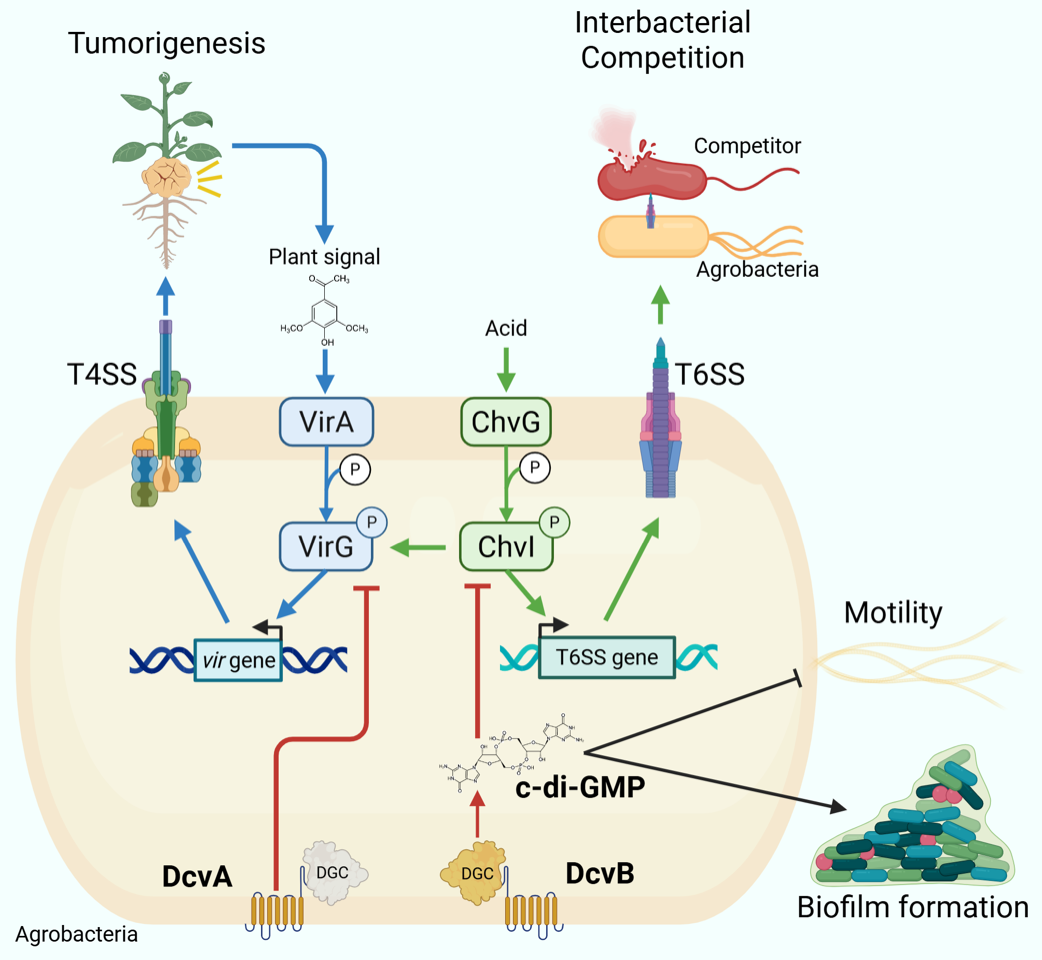[Erh-Min Lai] Agrobacteria Deploy Dual Regulatory Mechanisms in Modulating Virulence and Competition
POST:Agrobacterium tumefaciens is a plant pathogen causing crown gall disease, relies on type IV secretion system (T4SS) for pathogenesis and type VI secretion system (T6SS) for niche competition. The research team has identified new players in modulating virulence and interbacterial competition through distinct regulatory mechanisms. These findings provide new insights for future applications in genetic transformation technology and disease control. The study was published in the ASM journal mBio on April 17, 2025.
Bacteria produce second messenger such as c-di-GMP to regulate various cellular processes, including biofilm formation, virulence, and bacterial antagonism. Diguanylate cyclases (DGCs) catalyze the biosynthesis of c-di-GMP and function to cope with changing environments through targeting specific effector proteins. The team discovered that the two DGC domain proteins, named DcvA and DcvB, suppress virulence and interbacterial competition through two different regulatory pathways. Further investigation revealed that the transmembrane domain of DcvA suppresses virulence gene expression and tumorigenesis by inhibiting the VirA/VirG two-component system independent of c-di-GMP biosynthesis. In contrast, DcvB exerts its regulatory function through its catalytically active DGC domain, elevating intracellular levels of the second messenger c-di-GMP. DcvB promotes biofilm formation while reducing virulence and T6SS-mediated interbacterial competition through suppressing ChvG/ChvI two-component system.
This study highlights two distinct strategies utilized by Agrobacterium for controlling virulence and niche adaptation. These findings offer new perspectives for the development of genetically engineered strains with tunable virulence for plant biotechnology.
This work is mainly contributed by first author, Xuan Lai, a Ph.D. candidate co-advised by Dr. Erh-Min Lai at the Institute of Plant and Microbial Biology, Academia Sinica and Dr. Chiu-Ping Cheng at the Institute of Plant Biology, National Taiwan University.
